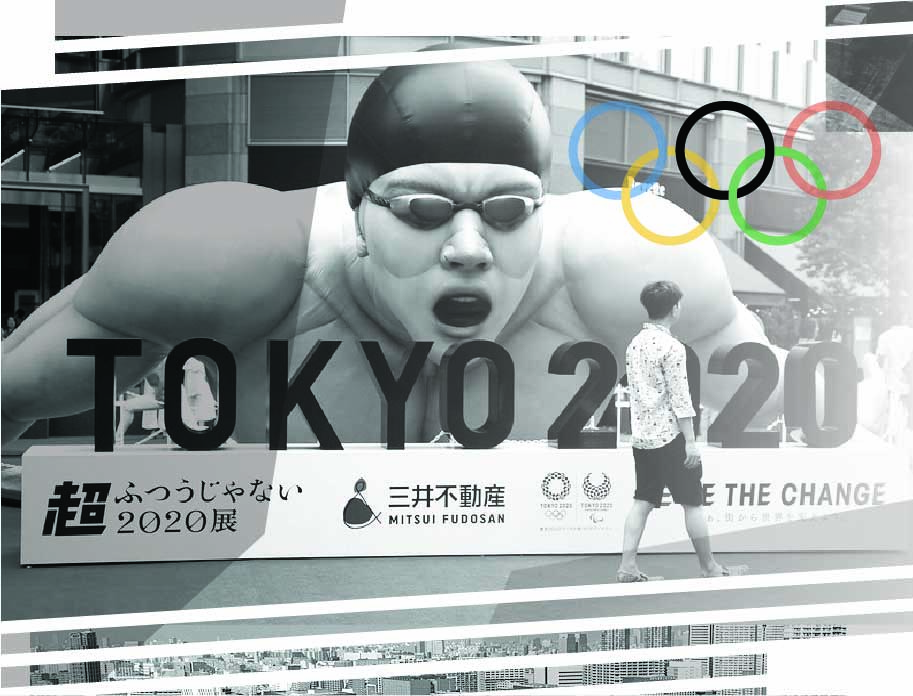
Dr Jennifer McClearen
Feminist media scholar who researches sports, difference, and consumer culture. She is an assistant professor in the Department of Radio-Television-Film at the University of Texas at Austin. Dr. McClearen published her first book, Fighting Visibility: Sports Media and Female Athletes in the UFC, in March 2021.

Section 3: Performance & Identity
- ‘The Games they are a-changin’’: footnotes on Olympic athletics in transition post-Tokyo 2020
- Racist slurs, stubborn animals, and colonial fear
- Tokyo 2021 and the LGBTQ athlete
- Transgender participation at the Tokyo Olympics: Laurel Hubbard and a media tempest
- Tokyo 2020: athlete welfare and coping with new anxieties
- Bodies of change: Women’s artistic gymnastics in Tokyo 2021
- When women aren’t women enough to compete
- Policing the uniforms and sportswear of Tokyo 2020: Commercialism in the name of competition
- Twitter helps normalize discussions on mental health beyond athletes
- Communication of athlete risk with head injuries in the 2020 Olympics
- The media coverage of the Tokyo 2021 Paralympic Games: Visibility, progress and politics
- Companies escape attention as debate on women’s uniform rages
- It’s complicated: Disability media and the Paralympic Games
- Tokyo Olympics: When athletes are faced with the impossible
As Naomi Osaka lit the Olympic Cauldron at the Tokyo 2020 Opening Ceremony, her selection as final torch bearer has less to do with her athletic prowess on the tennis court than with what she can symbolize about Japan’s racial identity to the world.
As a mixed race Japanese and Haitian woman who has grown up in the U.S., her dark skin and bright red box braids signal a modern Japan desiring to embrace its own multiracial identity. In typical Osaka fashion, she chose to emphasize her identities at the ceremony by braiding her curly hair in a fashion beloved by the Black diaspora rather than using a straight iron to appear more stereotypically Asian. Osaka can be Japanese, American, Black, Asian, or mixed race in different contexts and is marketable globally because of the flexibility of her identities.
The 23-year-old champion has become a branding darling for sponsors, the Olympics, and Japan in the run up to the Tokyo games. However, Osaka’s cauldron lighting tells the world more about who Japan wants to be on the global stage than who Japan is currently. Osaka’s selection as penultimate torchbearer reveals how we can understand the Olympic stage as showcasing a nation’s aspirations for itself rather than simply a direct representation of reality.
The torch relay
The Olympic Games are an opportunity for nations to deliver a spectacle of nationalism and grandeur in front of a global audience. As scholar David Rowe writes, mega-events like the Olympics carry “profound social, cultural, political and economic significance: constructing, reinforcing and challenging forms of national identity; combining and dividing social groups within and across nations…” Symbols of national identity, belonging, and pride of the host country are spread throughout the games and are concentrated in the Opening Ceremony.
The Torch Relay is one such Opening Ceremony tradition that allows a nation to project who it is unto the world. Originally conceived as a form of Nazi propaganda at the 1936 Berlin Olympics, the torch relay visits various locations around the globe and/or the host country in the lead up to the Games. Countries choose athletes, model citizens, and celebrities to represent their homeland and displays key historical and cultural landmarks. Thus, selecting Osaka to finish the relay attaches the nation of Japan to her brand and vice versa.
The Osaka brand
Osaka is young and successful and her racial background makes her brand appealing to several global markets—most notably in North America and Asia. For North American markets, she is young, multicultural, biracial, and a Black Lives Matter activist, all factors that make her appealing to Generation Z because young people currently age 11-25 are more supportive of diversity, globalism, and social justice causes than previous generations.
Japan can claim Osaka’s winning record, global marketability, and youthful cultural cache in American and Asian markets as a part of the image it projects globally. Scholar Aihwa Ong explains that cultural logics of transnationality create a form of “flexible citizenship” not bound by geographical borders in ways it once was. She says flexible citizens “benefit from their participation in global capitalism [and] celebrate flexibility and mobility.” Osaka is a successful Japanese citizen because of her malleability in the global market–a testament to the cultural and economic clout of Japan.
Mixed race Japan
Osaka’s flexible citizenship is both desirable because of her symbolic and economic clout, but also contested as Japan grapples with incorporating mixed identities into the nation. “The Land of the Rising Sun” is indeed becoming more racially diverse; however, children who are born of mixed parentage in Japan are still called “hafu,” or half Japanese. The bullying of mixed race children also still occurs (see this controversial Nike advertisement).
Additionally, while mixed race Black athletes bring a sense of sporting prestige for the country, their authenticity as Japanese is always under question. Osaka and Ruy Hachimura (a Black Japanese NBA player) are frequently criticized online for not being “pure Japanese.” This means that Osaka’s flexible citizenship can never fully escape the reality of Japan’s current struggles with incorporating mixed identities as national subjects.
The experience of mixed-race athletes like Osaka in the Japanese public sphere shows something that is often true about Olympic host nations performing before the world: nations show us who they want to be and not who they are. Spectacles of diversity and inclusion performed for the world should be read as beginning at the symbolic level rather than a reflection of a current reality.
Tokyo 2020 told the world that a multiethnic Japanese identity is possible. Now Japan, like so many other nations, must move beyond celebrating diversity when it benefits their image culturally and economically and do the difficult work of living up to their aspirations.

